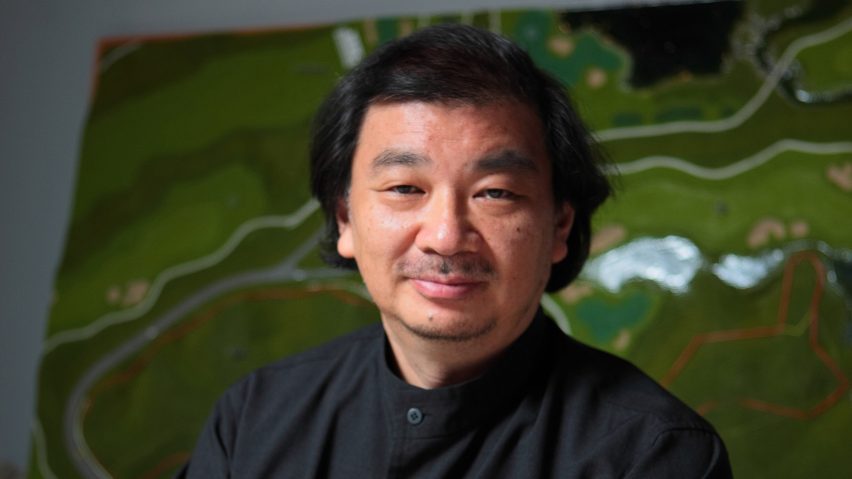
"I always avoid designing something fashionable" says Shigeru Ban
Pritzker Architecture Prize-winner Shigeru Ban explains why he is tired of seeing architects use mass timber and how he wants to design a building that "changes its clothes" in this interview.
Ban is known for his structurally innovative wooden buildings and his work with biomaterials, including cardboard and mass timber.
Speaking to Dezeen at the launch of his installation design for The Harmony of Form and Function exhibition during Milan design week, he said he aims to use natural materials as much as possible for his designs, but that they need to be complemented by other materials.
"We cannot build buildings only using biomaterials, we have to use concrete and steel," Ban told Dezeen. "We cannot make everything in paper and wood, but I like to use the natural material as much as possible."
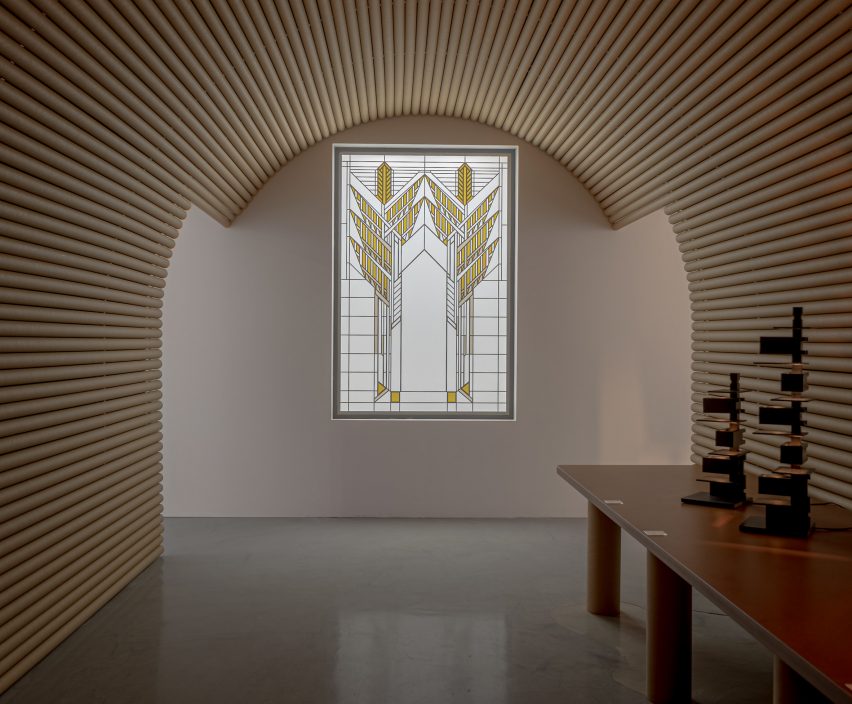
However, he said he is tired of seeing architects using mass timber because the material is now fashionable.
"I'm tired of seeing that – it's a very fashionable style now," Ban said."I always avoid designing something fashionable, so lately I'm really tired of seeing the many buildings and architects using mass timber."
"People use the timber just like a surface, a decoration," he added.
While Ban uses plenty of wood in his designs, he claimed he aims to do so in a way that is not superficial.
"It's not just decoration, it has to be part of the structure and the innovation," he explained.
"The general public cannot distinguish between what is innovative and what is just decoration – now that there are many good products, such as printed paper, that look like wood, people cannot recognise and distinguish between that and real wood."
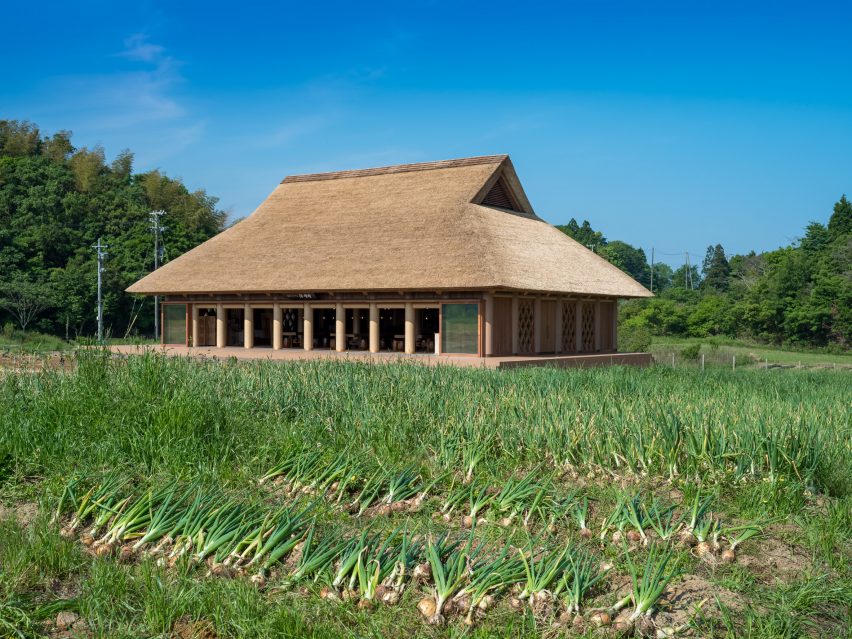
Still, he believes the industry has come a long way since he first started working with recyclable materials almost 40 years ago.
"I started designing using recyclable materials in 1985 when nobody was talking about ecology and sustainability," Ban said.
"It's a good thing that people are talking about it now because the environmental issue is a really important issue. But still, everybody talks about it and asks to do the sustainability without the understanding."
"I think we need to drastically change awareness," he added.
Building regulations are increasingly being used to try to encourage architects to use more biomaterials, but Ban believes designing everything to one standard can be wasteful.
"Many building regulations have become very strict and we have to spend more money and more material to make a more insulated building," he said.
"For example, we design office buildings, especially in Europe, and nobody is working in the summer but we have to make the building very insulated – even for the summer when people are not working in the office."
His aim is to instead design a building that can be adapted for different uses depending on the season.
"Instead of just using materials to make buildings more insulated, I think buildings could be more flexible, be open and closed," he said.
"Like a human being – we have more clothes in the winter and we take off the clothes in the summer, " he added. "So that is kind of my dream, to design a building that changes its clothes."
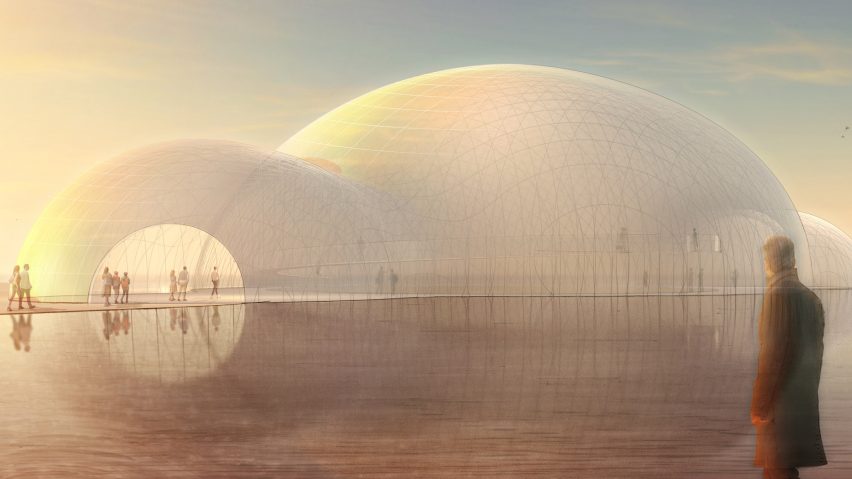
Ban also revealed that he is one of the architects who will be designing a pavilion for the upcoming World Expo 2025 Osaka, sharing an image of his pavilion exclusively with Dezeen.
Called Blue Ocean Dome, it will comprise three domes made from different materials – paper tubes, laminated bamboo and carbon-fibre reinforced plastic, a lightweight material not normally used for buildings because of its cost.
To Ban, expos should function as an occasion for architects to rethink how they design buildings structurally, rather than trying to design the most unusual forms.
"In recent pavilions, any country, they're just competing with the different unusual shapes, not being innovative on the structure," Ban said.
"I'm hoping to develop a system for future building, not competing with unusual shapes."
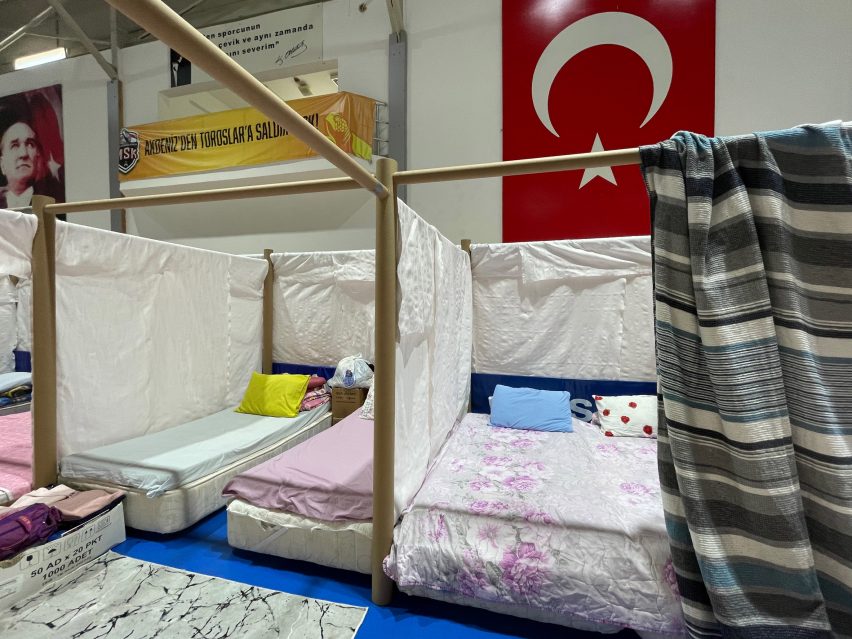
Among Ban's other structurally innovative designs are the cardboard-tube shelters that he created for victims of the Turkey-Syria earthquake in February.
These were a continuation of his work with the Voluntary Architects' Network, a non-governmental organisation (NGO) that Ban founded in 1995 after a major earthquake in Kobe, Japan.
Since then, he said he has seen more architects get involved in this type of socially aware architectural design.
"When I was working in Kobe in 1995, there were no architects – the architects are normally looking for the new projects coming when the cities are rebuilt after a disaster," Ban said.
"But I saw that the people were suffering in very poor living conditions before the city was rebuilt, in refugee shelters and temporary housing," he added. "I thought, 'that is our responsibility, to improve those kinds of conditions."
He believes his work in Kobe and over the years has inspired architects to become involved in design responding to crises.
"Now, little by little, architects have started working in disaster areas," Ban said.
The portrait is courtesy of Shigeru Ban Architects.
Dezeen in Depth
If you enjoy reading Dezeen's interviews, opinions and features, subscribe to Dezeen In Depth. Sent on the last Friday of each month, this newsletter provides a single place to read about the design and architecture stories behind the headlines.